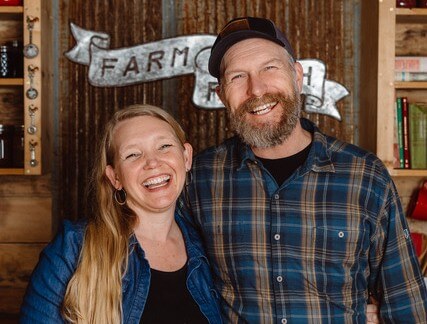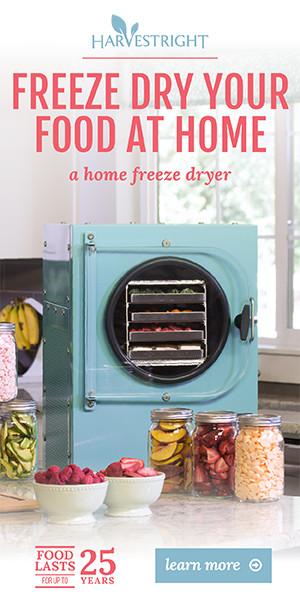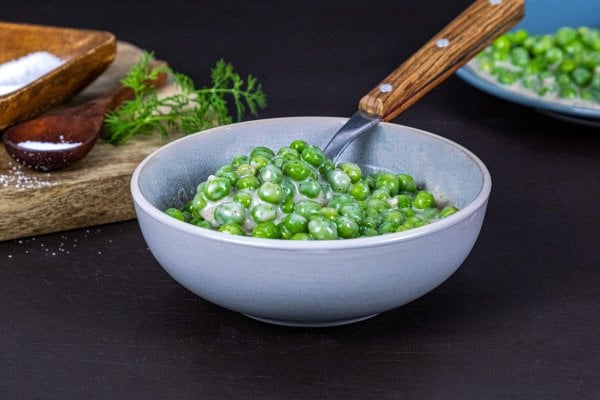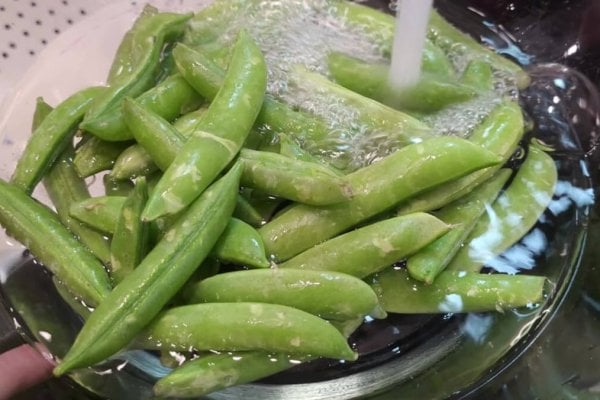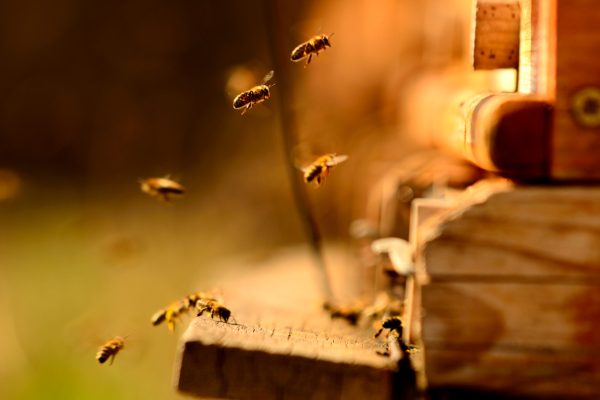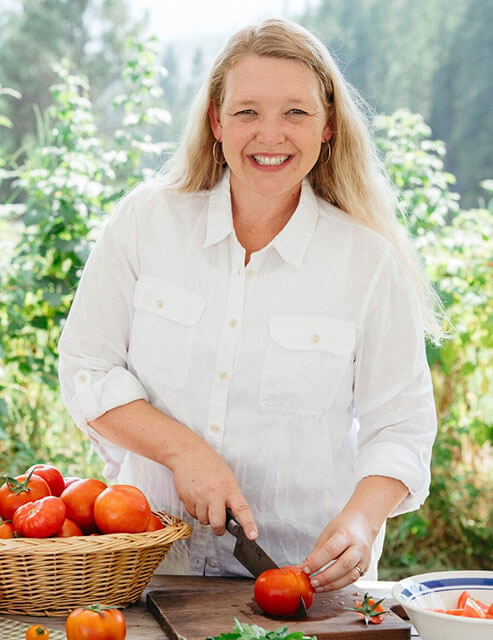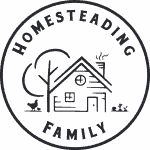Canning has been a mainstay of home food preservation for hundreds of years. It is important to know what foods should not be canned, whether pressure canning or using the water bath method. Read on to learn why these foods are not suitable for the canning process and other ways you can preserve your bounty.
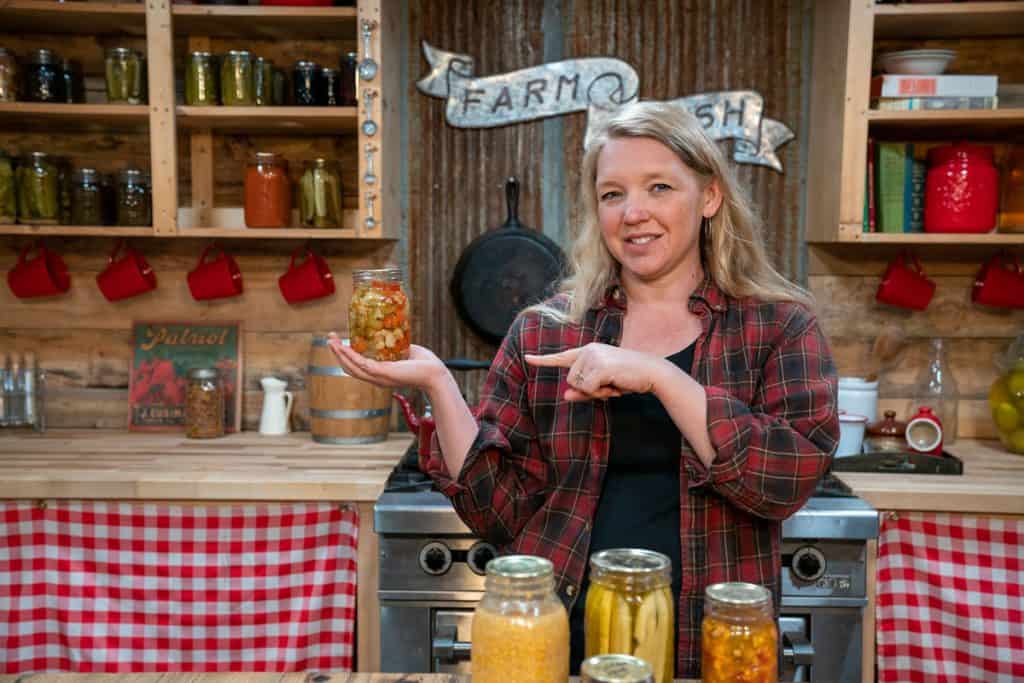
Canning for Food Preservation
Canning for food preservation is one of the best methods for putting up the food you have worked so hard to grow, raise, and source. When I take people on a pantry tour of how I store a year’s worth of food, it becomes clear how much I value canning.
There is something so satisfying about seeing a well-stocked pantry lined with colorful canned cherries, homemade plum jelly or strawberry rhubarb jam offset by garlic dill pickles, white bean chicken chili, tomato sauce, canned potatoes, and various canned meats.
While canning has benefits, I stress the importance of diversifying your long-term storage methods to have a backup plan when one system fails. Additionally, you will want to favor the preservation method that yields the best flavor, texture, and safety for your foods.
We have looked at what foods should not be dehydrated, what foods should not be frozen, and what foods should not be freeze-dried, and it’s equally as important to learn what foods should not be canned.
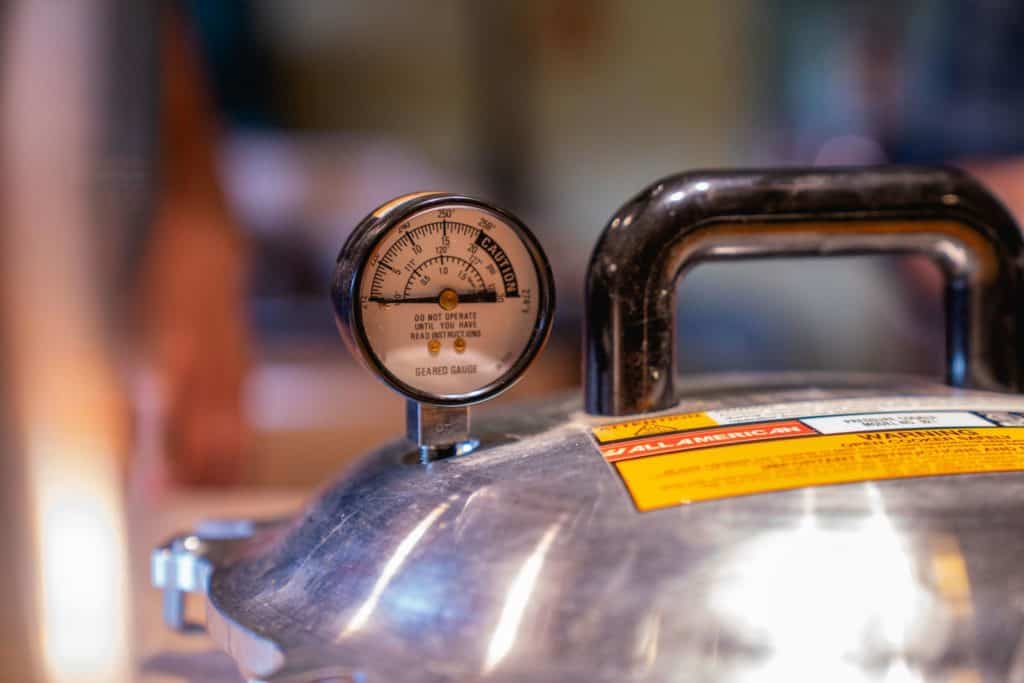
Canning Safety Tips
Canning can be a time-consuming process. So being organized, having your supplies on hand and knowing what method works best for each food can save you a lot of time and energy.
- Organization & Preparedness – This post on Tips for a Busy Preservation Day lists my top priorities to keep the day running smoothly without feeling overwhelmed.
- Gather Supplies Needed – Inspect your canning jars and lids for damage to prevent a false seal. It’s important to have the right tools for the job. Check out these posts for further information on canning supplies:
- Water Level in Canner – Knowing how full your canner should be is critical when using safe canning procedures.
- Pressure Gage Check – This post on canning mistakes to avoid shows you how to make sure your pressure gauge works properly.
- Elevation Adjustments – The elevation varies from sea level to mountainous regions affecting the amount of time needed to can safely. Pressure Canning Tips (+ 5 Common Mistakes to Avoid) will help you know how long it takes for safe canning practices.
- Water Bath Canner vs. Pressure Canner – Use the right canner for the job and the proper technique for the food. For example, water bath canning is only appropriate for high-acid fruits, preserves with high sugar content, pickled vegetables, and tomatoes if the correct ratio of vinegar, lemon juice, or citric acid is added. Foods like meat, poultry, and seafood (and certain vegetables) should only be processed in a pressure canner. It’s essential always to follow approved and tested canning recipes.
- Keep Records and Label – Label the foods you store in your pantry. This is just great practice to be able to eat and preserve what you need each year. My blog posts on how long is canned food good for and prepping your pantry for preserving season offers valuable, tried and trustworthy tips to keep your pantry updated and organized.
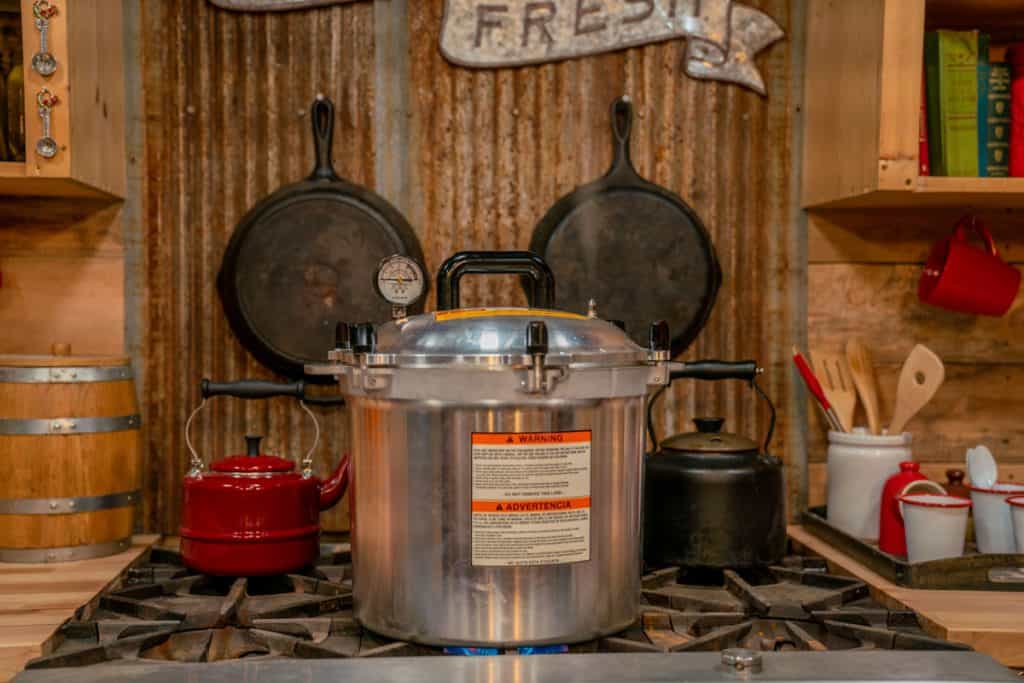
Why Are Some Foods Not Suitable for Canning
Canning relies on heat to kill harmful microorganisms and inactivate enzymes to preserve food. Some foods will not hold up to the heat, and the texture, flavor and consistency can become compromised.
Other foods will not allow adequate heat to sufficiently distribute throughout the jars or food, allowing harmful bacteria to multiply and the food unsafe to consume.
Fortunately, you can usually preserve these foods using one of these other preserving methods:
- Intro to Fermentation
- Dehydrating Food
- Root Cellaring
- Freeze Drying vs. Dehydrated Foods
- Easy Freezer Meal Cooking Tips

What Foods Should Not Be Canned
Dairy Products
When you own a milk cow, it’s important to understand how to handle raw milk properly. Dairy products are low-acid foods. Low acid foods need to be pressure canned to properly sterilize them for canning. Unfortunately, pressure canning dairy does not have safety tested and approved times. It is best to avoid canning them.
Here are alternate methods we use to preserve our dairy products.
- Milk – Milk will only last for a few months in the freezer, so our preferred long-term storage method is to freeze dry milk. Alternatively, you can allow raw milk to clabber at room temperature and consume it like you would yogurt or cottage cheese.
- Butter – Homemade butter freezes well when wrapped correctly in an airtight container. Unsalted butter will last up to nine months, and salted butter will last up to a year in the freezer.
- Cheese – Even if you don’t own a milk cow, you can still make cheese from store-bought milk. Many hard cheeses can be waxed and stored on a shelf to age for a few months. When it comes to soft cheeses, our favorite is this cultured soft cheese recipe which can store at room temperature for up to 12 months!
- Recipes – I love canning convenience meals to avoid expensive take-out and provide healthier options when life gets busy. Recipes containing dairy pose a potential risk of foodborne illness, so recipes like this chicken pot pie are best preserved as freezer or freeze-dried meals.
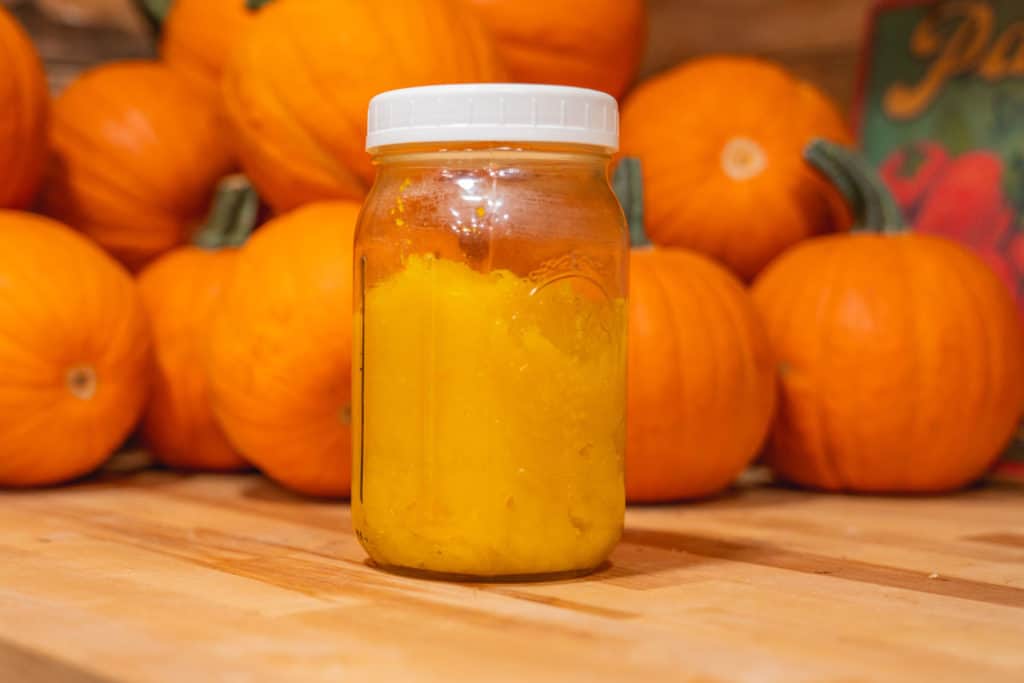
Dense Foods
The thick consistency of foods such as refried beans and homemade pumpkin puree prevents the heat from thoroughly penetrating through your preserve, allowing the growth of bacteria and molds, making you ill.
Instead, canning whole beans and canning cubed pumpkin (or winter squash) makes these foods soft and easy to mash when preparing refried beans for taco night or pumpkin puree to use in from-scratch pumpkin pie.
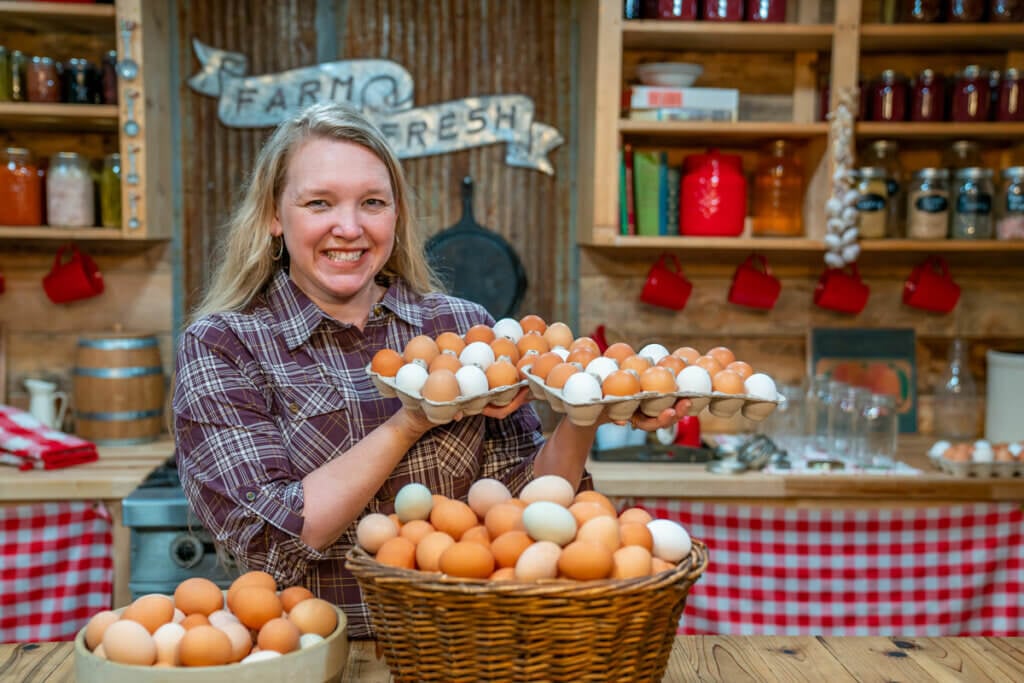
Eggs
Although you may find commercially canned pickled eggs, no tested and approved recipes for home-canned eggs exist.
Check out these other options for preserving eggs:
- How to Handle Farm Fresh Eggs
- 5 Ways to Use or Preserve Extra Eggs
- Freezing Eggs – Can You Freeze Eggs & How to do it Right
- Freeze-Dried Eggs – Everything You Need to Know
- Water Glassing Eggs – Preserving Eggs for Long-Term Storage

Fats and Oil
Foods that are comprised mainly of fat (such as oils, mayonnaise, or lard) are not safe to be canned. They have a low moisture content which means it doesn’t have enough water in it to help the contents reach 240°F.
A better way to preserve homemade mayonnaise is to make fermented mayonnaise, and you can learn how to render lard to be shelf stable for many months.
Pure oils can turn rancid, and their thicker consistency prevents heat from penetrating the oil thoroughly. Botulism and mold can multiply rapidly, infiltrating the oil, which can be very unsafe to consume.
Keep an eye on the expiration dates of store-bought oils and store them in a cool, dark place.
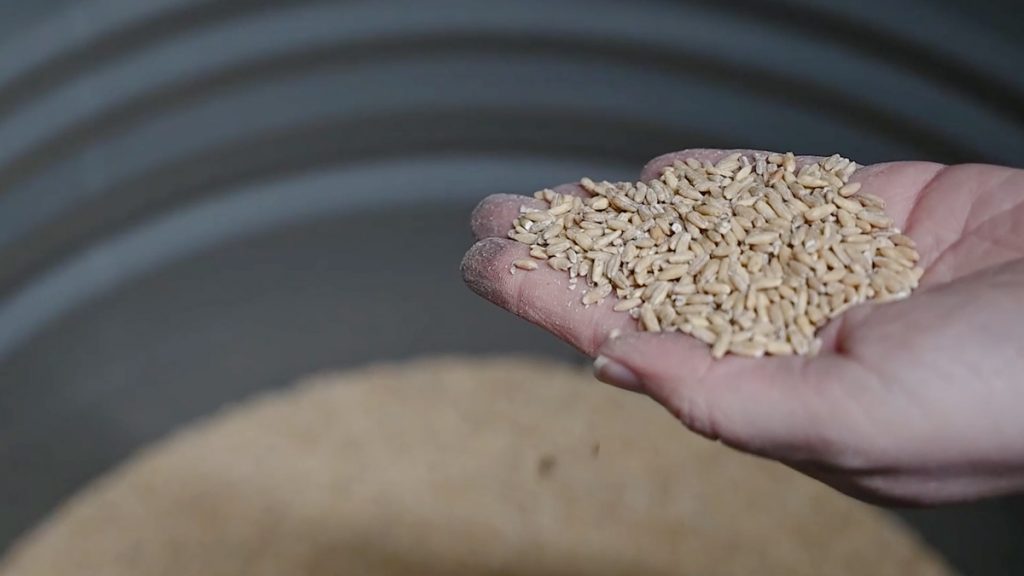
Grains
Many people are tempted to add rice or noodles to their canned meals. This is a no-no and should be avoided.
The best practice is to add grains when heating the canned food up and allow the noodles, rice, or other grains to cook at the time of serving. Many foods prepared with grains can also be dehydrated, freeze-dried or frozen.
The great news is, whole grains will store for a very long time! We use food storage barrels for long-term storage of our grains and purchased a home grain mill for making freshly milled flour.

Nuts
You should not can nuts because of the oil content. Heat doesn’t fully penetrate the outer oily layer killing off dangerous bacteria and molds. Nuts are best if kept in their hull or shell in a tight-fitting jar in a dry, cool place.
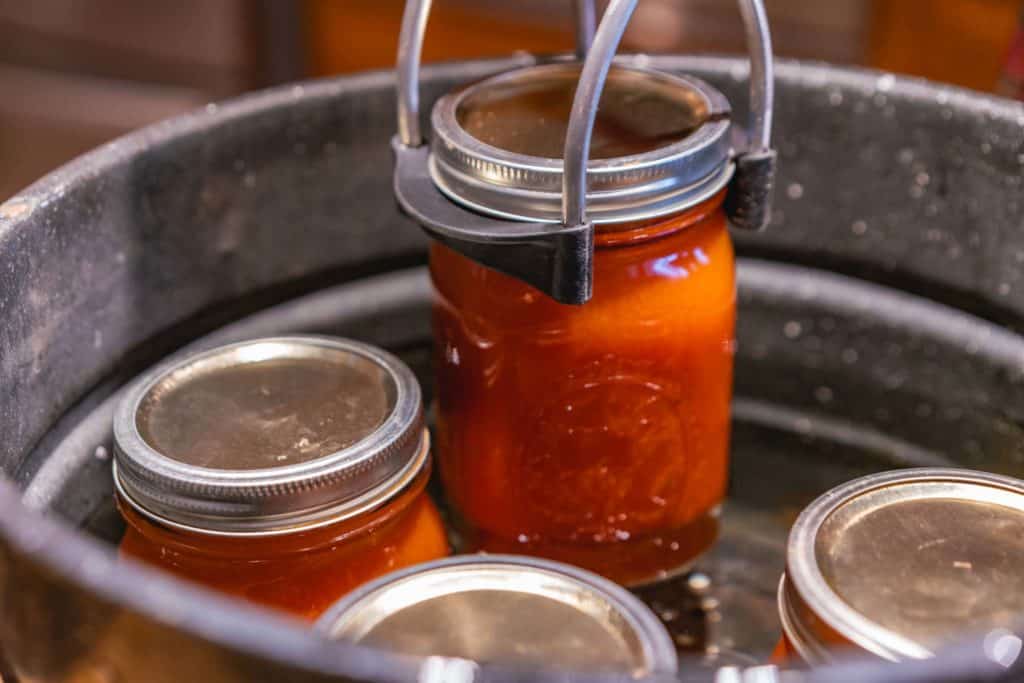
The Abundant Pantry
The National Center for Home Food Preservation warns about the dangers of poor canning practices for good reason. Improperly canned foods pose serious health risks and are not worth taking chances.
This knowledge can leave many feeling paralyzed, fearing harming their loved ones and avoiding learning how to can. The Abundant Pantry Canning Class was designed to help you overcome this fear and learn how to SAFELY and confidently stock your pantry.
This class includes 50+ video lessons with over 20 thorough step-by-step recipe tutorials and is full of free bonuses. Sign up and get started today!
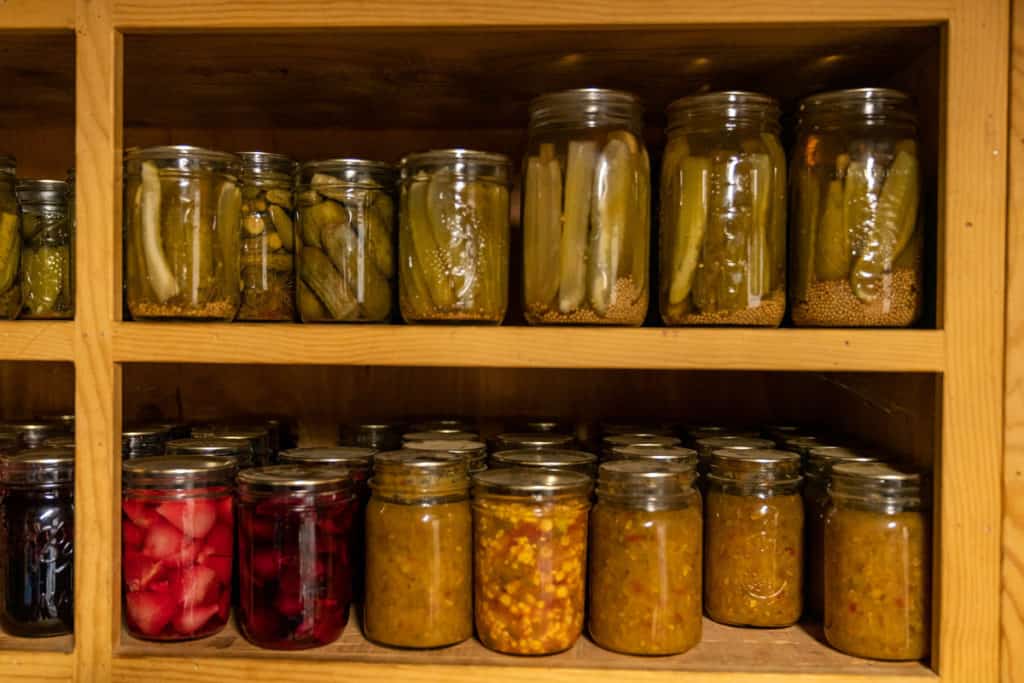
Other Articles You May Enjoy
- Preservation 101 Introduction to Canning
- Pantry Tour (Storing a Year’s Worth of Food)
- Root Cellaring
- Freeze Drying vs. Dehydrated Foods
- Preservation 101 Root Cellaring
- Preservation 101 Dehydrating Food
- Canning Mistakes to Avoid When Water Bath & Pressure Canning
- How Long is Canned Food Good For?
- Prepping Your Pantry For Preserving Season
- Building Up a Well-Stocked Pantry & Long Term Food Supply

